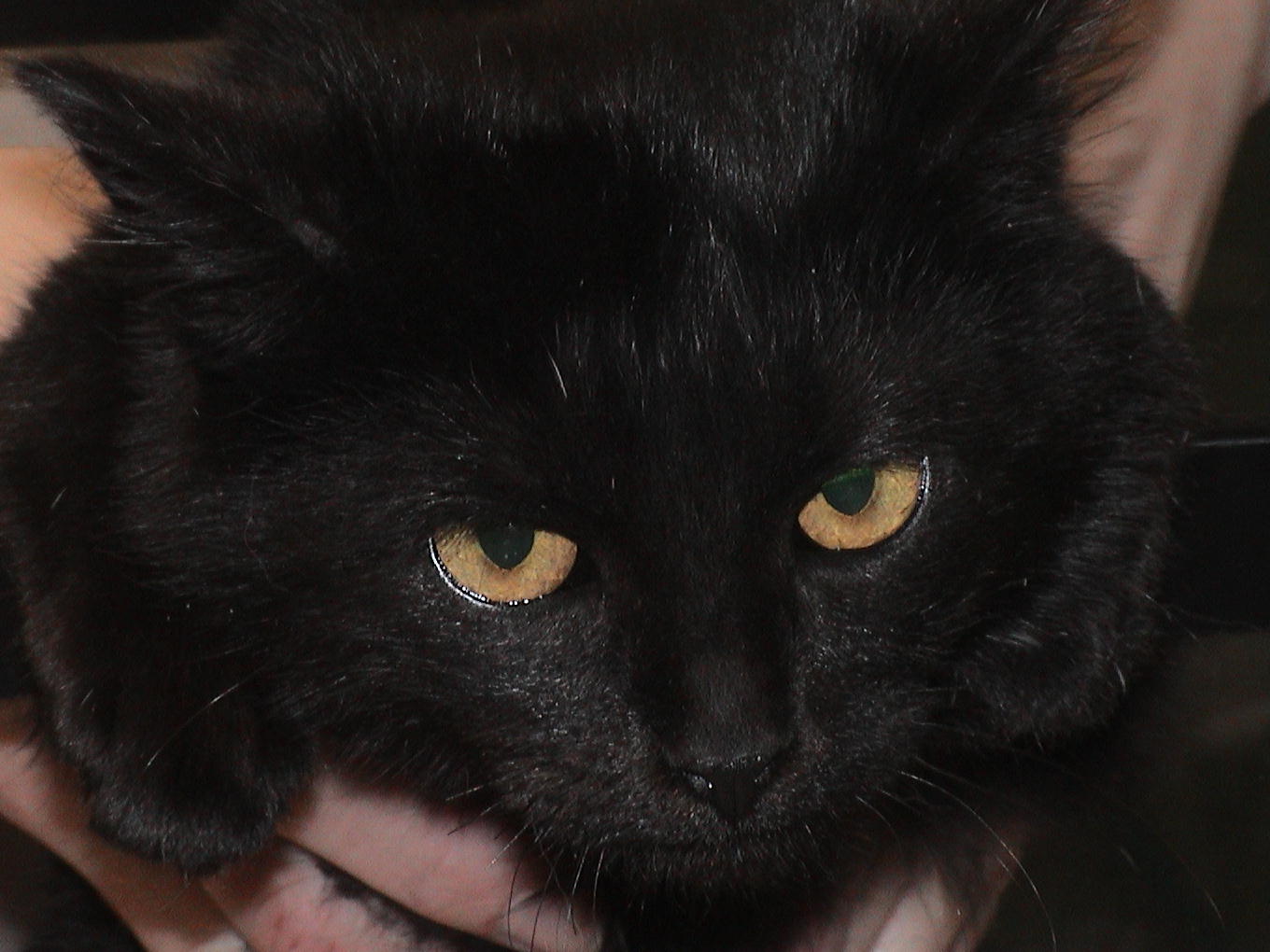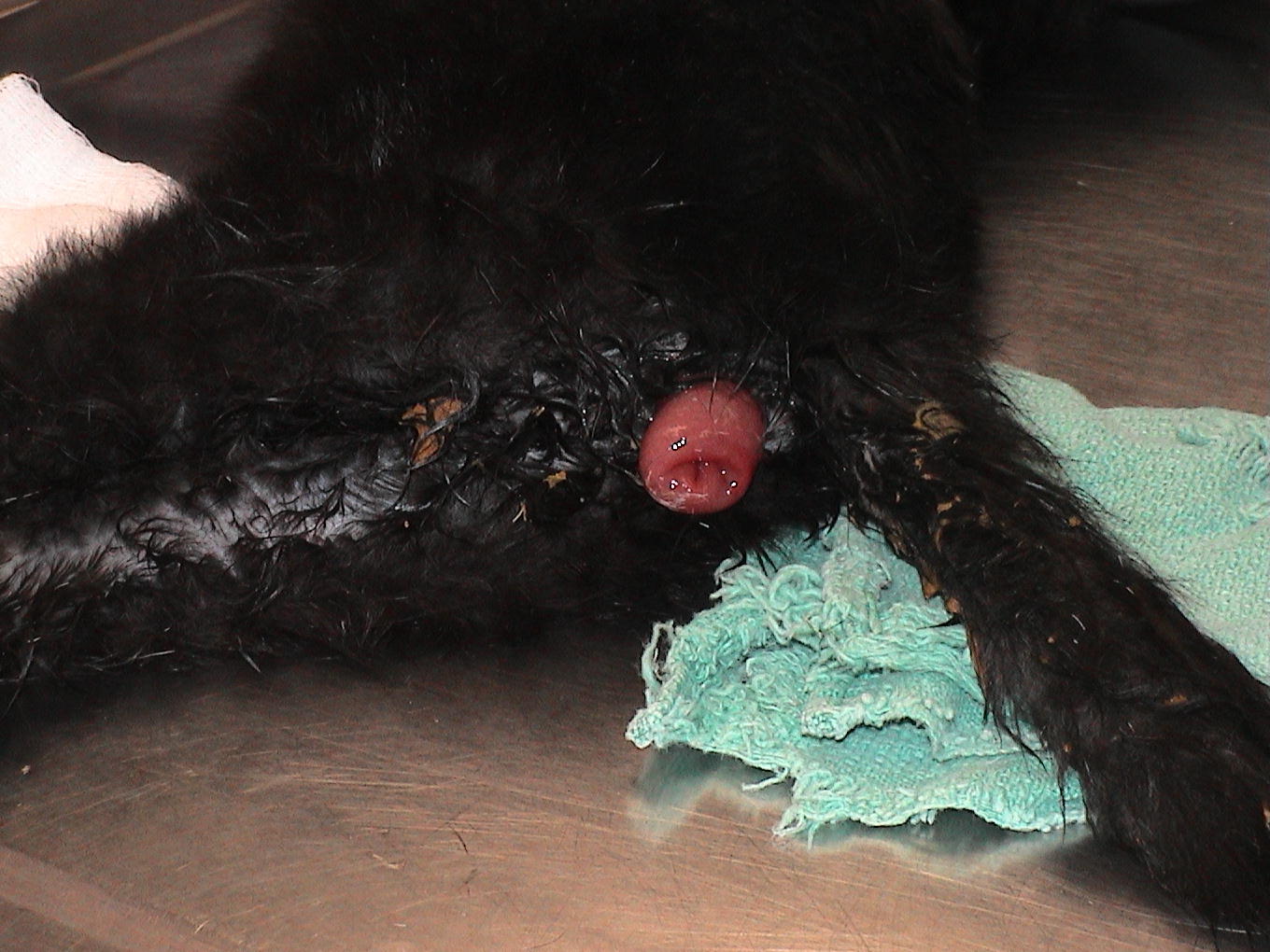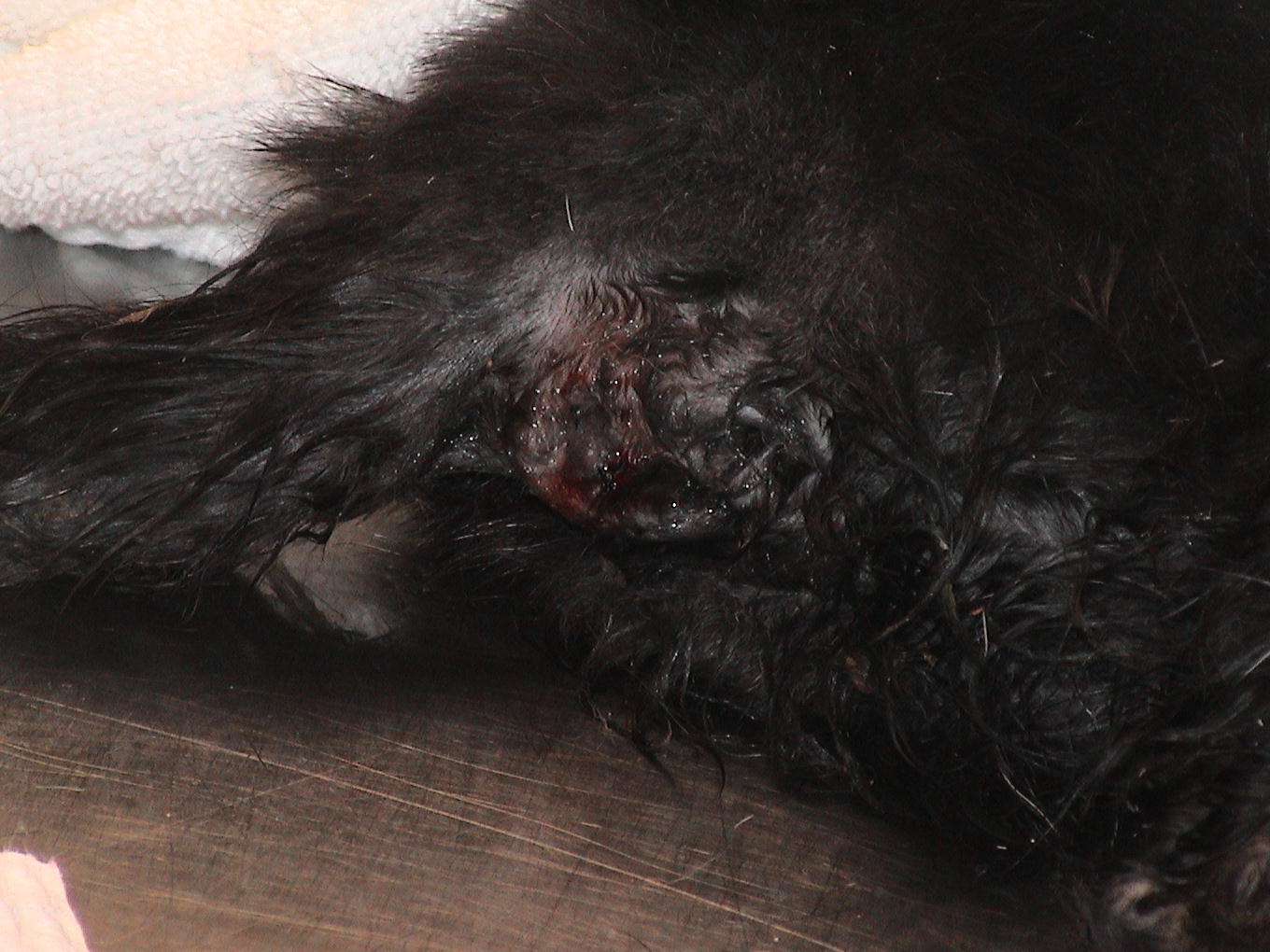"The Best Care For Your Best Friend."
Lucy - Rectal Prolapse
Lucy, a young female farm cat, had a history of severe diarrhea.
Her diarrhea caused increased straining and an increase in the frequency of bowel movements. As a result of the straining, part of her rectum everted from its normal position. This is called rectal prolapse. The rectal tissue becomes very inflamed and swollen when it is out of place.
To treat rectal prolapse, the animal is first sedated to prevent additional straining. The rectum is gently lubricated and returned to its normal position. A purse string suture is temporarily placed in the anal tissue to prevent additional prolapses. This picture was taken after the prolapse was replaced.
Diagnostic testing revealed that the cause of the diarrhea was a severe roundworm and coccidia infestation. Medication for diarrhea in addition to medication for the identified internal parasites was started. A week later the stitch was removed.
Rectal prolapses are common in pigs, cattle, and ferrets although any species can develop one.
Special thanks to Lucy's owners for allowing us to share this case.





Share On: